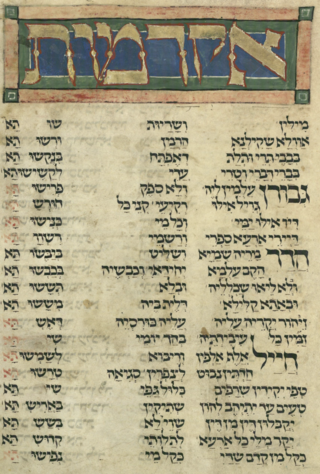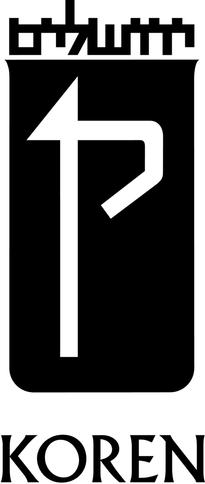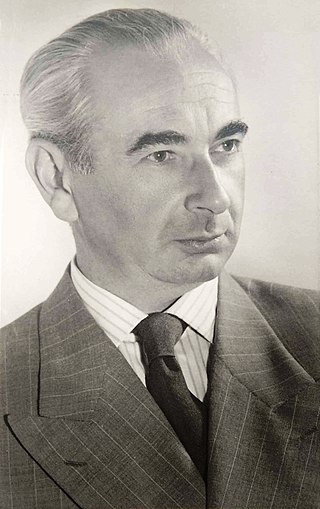
A siddur is a Jewish prayer book containing a set order of daily prayers. The word siddur comes from the Hebrew root ס־ד־ר, meaning 'order.'

Rabbinic literature, in its broadest sense, is the entire spectrum of rabbinic writings throughout Jewish history. However, the term often refers specifically to literature from the Talmudic era, as opposed to medieval and modern rabbinic writing, and thus corresponds with the Hebrew term Sifrut Chazal. This more specific sense of "Rabbinic literature"—referring to the Talmudim, Midrash, and related writings, but hardly ever to later texts—is how the term is generally intended when used in contemporary academic writing. The terms mefareshim and parshanim (commentaries/commentators) almost always refer to later, post-Talmudic writers of rabbinic glosses on Biblical and Talmudic texts.
Aleinu or Aleinu leshabei'ach, meaning "it is upon us" or "it is our obligation or duty" to "praise God," is a Jewish prayer found in the siddur, the classical Jewish prayerbook. It is recited in most communities at the end of each of the three daily Jewish services and in the middle of the Rosh Hashanah mussaf. It is also recited in many communities following Kiddush levana and after a circumcision is performed. It is second only to the Kaddish as the most frequently recited prayer in current synagogue liturgy.
ArtScroll is an imprint of translations, books and commentaries from an Orthodox Jewish perspective published by Mesorah Publications, Ltd., a publishing company based in Rahway, New Jersey. Rabbi Nosson Scherman is the general editor.

Samson Raphael Hirsch was a German Orthodox rabbi best known as the intellectual founder of the Torah im Derech Eretz school of contemporary Orthodox Judaism. Occasionally termed neo-Orthodoxy, his philosophy, together with that of Azriel Hildesheimer, has had a considerable influence on the development of Orthodox Judaism.

The machzor is the prayer book which is used by Jews on the High Holy Days of Rosh Hashanah and Yom Kippur. Many Jews also make use of specialized machzorim on the three pilgrimage festivals of Passover, Shavuot, and Sukkot. The machzor is a specialized form of the siddur, which is generally intended for use in weekday and Shabbat services.

Jonathan Henry Sacks, Baron Sacks was an English Orthodox rabbi, philosopher, theologian, and author. Sacks served as the Chief Rabbi of the United Hebrew Congregations of the Commonwealth from 1991 to 2013. As the spiritual head of the United Synagogue, the largest synagogue body in the United Kingdom, he was the Chief Rabbi of those Orthodox synagogues but was not recognized as the religious authority for the Haredi Union of Orthodox Hebrew Congregations or for the progressive movements such as Masorti, Reform, and Liberal Judaism. As Chief Rabbi, he formally carried the title of Av Beit Din (head) of the London Beth Din. At the time of his death, he was the Emeritus Chief Rabbi.

Simeon Singer (1846–1906) was an English Rabbi, preacher, lecturer and public worker. He is best known for his English translation of the Authorised Daily Prayer Book, informally known as the "Singer's Siddur".
Lekha Dodi is a Hebrew-language Jewish liturgical song recited Friday at dusk, usually at sundown, in synagogue to welcome the Sabbath prior to the evening services. It is part of Kabbalat Shabbat.
In Judaism, Nusach (Hebrew: נוסח, romanized: nusaḥ, Modern Hebrew pronunciation nusakh, plural refers to the exact text of a prayer service; sometimes the English word "rite" is used to refer to the same thing. Nusakh means "formulate" or "wording".

Adon Olam is a hymn in the Jewish liturgy. It has been a regular part of the daily and Shabbat (Sabbath) liturgy since the 15th century.
Yedid Nefesh is the title of a piyyut and zemer. It is usually sung on Shabbat.
Philip Birnbaum was an American religious author and translator. He is best known for his work Ha-Siddur ha-Shalem, a translation and annotation of the Siddur first published in 1949.

Akdamut, or Akdamus or Akdamut Milin, or Akdomus Milin, is a prominent piyyut written in Aramaic recited annually on the Jewish holiday of Shavuot by Ashkenazi Jews. It was penned by Rabbi Meir bar Yitzchak of Orléans, who was a cantor in Worms, Germany,. Akdamut consists of praise for God, His Torah, and His people.
Siddur Sim Shalom refers to any siddur in a family of siddurim, Jewish prayerbooks, and related commentaries, published by the Rabbinical Assembly and the United Synagogue of Conservative Judaism.

Koren Publishers Jerusalem is an Israeli publisher of Jewish religious texts. It was established in 1961 by Eliyahu Koren, with the aim of publishing the first Hebrew Bible designed, edited, printed, and bound by Jews in nearly 500 years. It produced The Koren Bible in 1962, The Koren Siddur in 1981, and the Koren Sacks Siddur in 2009, in addition to numerous editions of these books and other religious texts in Hebrew, English, and other languages.

Eliyahu Koren was a master typographer and graphic artist. After studying in Nuremberg, he immigrated to Mandatory Palestine in 1933. He served as head of the graphics department of Keren Kayemet, the Jewish National Fund, from 1936 to 1957. He founded Koren Publishers Jerusalem in 1961, which published the Koren Bible in 1962. He published the Koren Siddur in 1981, and various religious texts until his death.

Mishkan T'filah—A Reform Siddur is a prayer book prepared for Reform Jewish congregations around the world by the Central Conference of American Rabbis (CCAR). Mishkan T'filah is Hebrew for "Dwelling Place for Prayer" and the book serves as a successor to Gates of Prayer, the New Union Prayer Book (GOP), which was released in 1975. In 2015, CCAR released the complementary Mishkan HaNefesh machzor for the High Holy Days. CCAR also produces a host of print and electronic materials to supplement the Mishkan T'filah book.
The Koren Siddur refers to a family of siddurim published by Koren Publishers Jerusalem beginning in 1981.

Amram Aburbeh, also spelled Abourabia and Aburabia, was the Chief Rabbi of the Sephardic congregation in Petah Tikva, Israel and author of Netivei Am, a collection of responsa, sermons, and Torah teachings.












